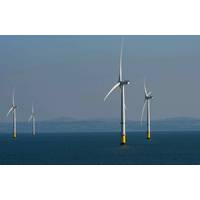California's Summer Gasoline Demand Slowed
California motorists drive almost 1 billion miles every day, and in doing so consume around 40 million gallons of gasoline and 8 million gallons of diesel.
Californians use their cars a bit less than the average U.S. resident but the state's population is so large it is one of the largest driving markets in the world.
State motorists account for 11 percent of all miles driven in the United States and consume more motor fuel than any individual country except China and Japan.
State data on traffic and fuel sales are therefore often used as a proxy for national trends, but California's gasoline consumption reflects a mix of local and national factors that are not always easy to separate.
Like other parts of the United States, California has seen a surge in car and truck use over the last two years as a result of strong economic growth, job creation and a big drop in fuel prices.
But in recent months, growth in both driving and fuel sales has slowed, pointing to more moderate increases in gasoline and diesel demand.
Growth in both traffic volumes and fuel sales has been below the national average since the end of the first quarter.
Traffic on state highways rose 3.2 percent in the year to June compared with 2014, but was up just 2.0 percent in August and 1.9 percent in September, according to the state department of transportation.
Gasoline sales rose 3.5 percent year-on-year in the first three months of 2015 but growth slowed to just 2.6 percent between April and June, according to state tax records.
In July, at the heart of the summer driving season, and the latest month for which tax records are available, gasoline sales were just 2.2 percent higher than the same month in 2014.
REFINERY PROBLEMS
Some of the weakness during the second and third quarters was probably due to local refinery problems that began in February, leaving the state short of fuel through the summer, and sent prices soaring.
California motorists generally pay more for gasoline than those in other parts of the country because of the state's isolation from refineries in the Midwest and Gulf Coast and stricter fuel quality standards to cut smog.
California also levies a higher rate of fuel tax than other states except Pennsylvania, Washington, New York and Hawaii.
Between 2005 and 2014, the state's motorists typically paid about 30 cents per gallon more for gasoline than the nationwide average.
But thanks to refinery problems, state prices surged and averaged almost 90 cents per gallon more than the country as a whole between March and August.
While motorists in the rest of the country enjoyed the cheapest summer gasoline prices since 2010, prices paid by drivers in California were little changed from the high levels in 2011-2014.
Relatively high prices of gasoline in California seem to have damped consumption growth over the summer even as low prices elsewhere caused demand to boom.
Following the end of the driving season, gasoline supplies in California and the rest of the West Coast have returned to more normal levels.
Prices have remained somewhat elevated at around 55 cents per gallon higher than the rest of the country, probably reflecting lack of spare capacity to cope with more outages and the next summer peak.
But they are now well below the long-term average and the level prevailing before oil prices tumbled in 2014, which should give a renewed boost to driving and gasoline consumption in the state.
DEMAND OUTLOOK 2016
The critical question is whether gasoline consumption in California, and the rest of the country, can continue growing in 2016 at the same rate as reported this year.
The answer is complicated because there are several cross-cutting influences at work which tend to both raise and lower fuel demand:
* Continued economic growth and job creation should both be positive factors for gasoline demand in 2014 in California and the rest of the nation.
* If prices remain relatively low, consumers will likely continue to opt for larger and less efficient vehicles, which will also tend to boost fuel consumption.
* Unless fuel prices drop again substantially, which seems unlikely, the effects of the price decline in 2014/15 on driving behaviour should gradually fade.
* Federal regulations on fuel economy will continue to tighten, which should also tend to cut total gasoline consumption.
The net effect of all these changes is difficult to forecast.
The U.S. Energy Information Administration predicts nationwide gasoline consumption will increase by just 20,000 barrels per day (bpd) in 2016 after increasing by around 190,000 bpd in 2015 ("Short-Term Energy Outlook" Nov 2015).
There are no separate forecasts for individual states, but if the national picture was replicated locally, California's consumption would be essentially flat next year.
However, the forecast looks conservative and may be underestimating the impact of lower fuel prices on both the mix of vehicles purchased and the amount of driving.
EIA originally expected gasoline consumption to fall by 20,000 bpd in 2015 "as improving fuel economy in new vehicles continues to offset highway travel growth" ("Short-Term Energy Outlook" Nov 2014).
In practice, nationwide fuel consumption has increased by 200,000 bpd more than originally forecast, thanks to traffic growth and lower prices.
The extent of demand growth next year is of central interest because it will determine how deeply oil supply must be cut to rebalance the oil market.
California's traffic growth and gasoline sales data over the next six months will give important clues about how quickly the global market will rebalance.
If consumption continues to increase, the oil market will rebalance faster, but if it turns out flat or even lower, rebalancing will take longer and require deeper cuts in supply.
By John Kemp


